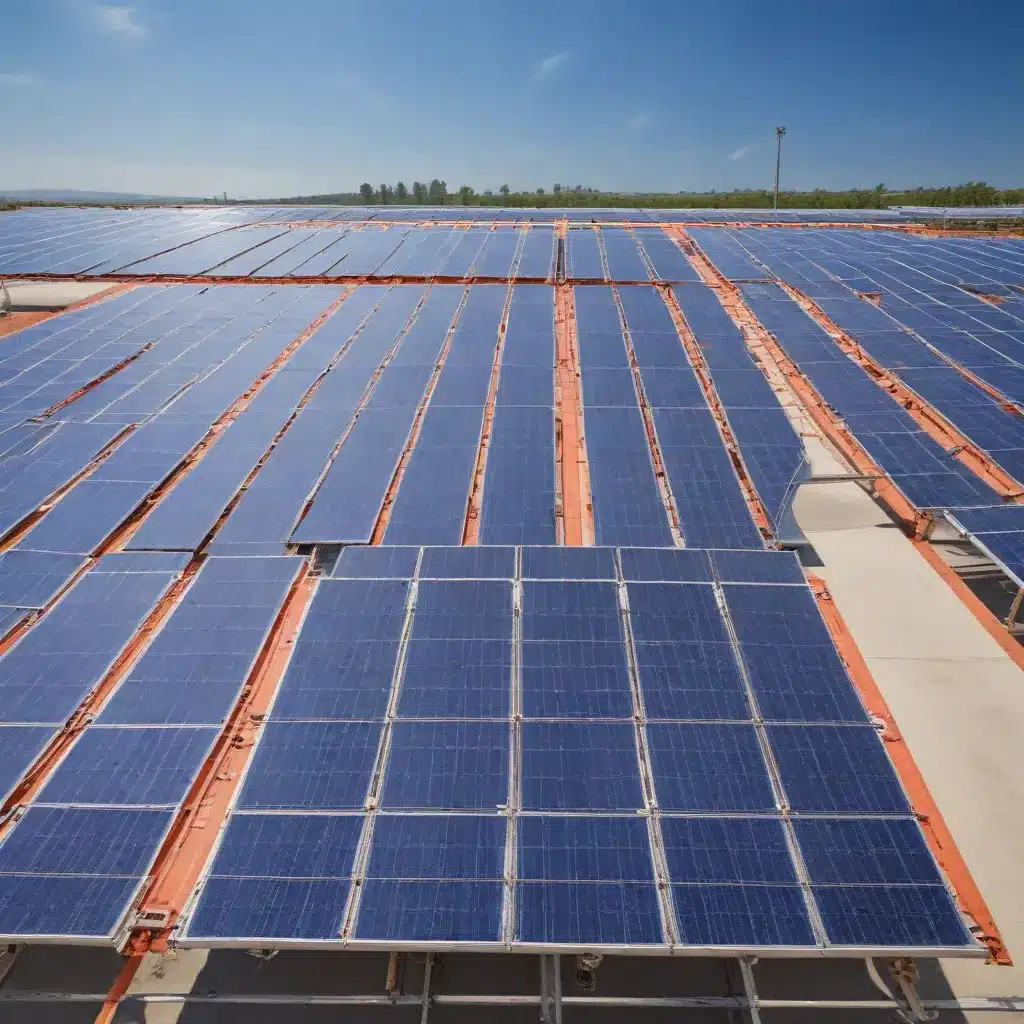
The Rise of Concentrated Photovoltaic (CPV) Systems
In the face of the deepening global energy crisis, concentrated photovoltaic (CPV) technology has emerged as an increasingly attractive method for directly generating electricity from the sun. CPV systems use optical concentrators, such as lenses or mirrors, to focus sunlight onto highly efficient multi-junction solar cells, generating significantly more power per square meter than traditional flat-plate photovoltaic (PV) panels.
However, a key challenge with CPV systems is their susceptibility to performance degradation and lifespan reduction due to elevated operating temperatures. The intense solar irradiation concentrated onto the small solar cell surface can cause rapid heating, leading to decreased electrical conversion efficiency and potential damage to the cells. Effective thermal management is therefore essential for maintaining the performance and reliability of CPV systems.
Air-Cooled Heat Exchangers for CPV Cooling
Among the various cooling techniques explored for CPV systems, air-cooled heat exchangers have shown promising potential due to their simplicity, cost-effectiveness, and ease of integration. These heat exchangers utilize the natural flow of ambient air to dissipate the excess heat generated by the concentrated solar cells, without the need for active pumping or complex liquid-based cooling systems.
Design Considerations for Air-Cooled Heat Exchangers in CPV
When designing air-cooled heat exchangers for CPV applications, several key factors must be taken into account:
-
Heat Dissipation Capacity: The heat exchanger must be sized appropriately to effectively dissipate the substantial heat load generated by the concentrated solar irradiation, typically in the range of 500-1000 W/m^2 or more.
-
Airflow Management: Efficient airflow over the heat exchanger surfaces is crucial for optimal heat transfer. This may involve the use of fans, careful duct design, or strategic placement within the CPV system.
-
Thermal Uniformity: Maintaining a uniform temperature distribution across the solar cell surface is important to prevent hot spots and ensure consistent performance.
-
Compact and Lightweight Design: The heat exchanger should be designed with a minimal footprint and weight to minimize the impact on the overall CPV system architecture and structural requirements.
-
Durability and Reliability: The heat exchanger must be able to withstand the harsh outdoor environmental conditions, including exposure to sun, wind, rain, and potential dust or debris accumulation, without compromising its thermal performance over the lifetime of the CPV system.
Air-Cooled Heat Exchanger Technologies for CPV Cooling
Several air-cooled heat exchanger technologies have been explored and implemented in CPV systems, each with its own advantages and limitations:
-
Plate-Fin Heat Exchangers: These compact and lightweight designs utilize arrays of thin metal plates with attached fins to increase the surface area for heat transfer. They offer good thermal performance but can be susceptible to fouling and reduced airflow over time.
-
Microchannel Heat Exchangers: Featuring a dense network of microscale channels, these heat exchangers enable efficient heat dissipation with a minimal footprint. However, they may be more complex to manufacture and maintain compared to plate-fin designs.
-
Finned-Tube Heat Exchangers: Consisting of circular tubes with attached fins, this architecture provides a balance between thermal performance and mechanical robustness. The tubes can be oriented vertically or horizontally to optimize airflow and heat transfer.
-
Heat Pipe-Assisted Heat Exchangers: Incorporating heat pipes to transport heat from the solar cells to the heat exchanger, this approach can improve thermal uniformity and enable more flexible system integration.
-
Hybrid Cooling Approaches: Combining air-cooling with other cooling techniques, such as liquid cooling or thermoelectric cooling, can further enhance the thermal management capabilities of CPV systems, though at the cost of increased complexity and system integration challenges.
Optimizing Air-Cooled Heat Exchanger Performance
To ensure the optimal performance and reliability of air-cooled heat exchangers in CPV systems, several key considerations must be addressed:
Thermal-Hydraulic Optimization
Careful design and optimization of the heat exchanger geometry, fin configuration, and airflow patterns can significantly improve the overall thermal-hydraulic performance, maximizing heat dissipation while minimizing pressure drop and fan power requirements.
Coating and Surface Treatments
Applying specialized coatings or surface treatments to the heat exchanger can enhance its thermal and fouling resistance properties, improving long-term performance and reducing maintenance needs.
Integrated Monitoring and Control
Incorporating temperature sensors, airflow monitoring, and active control algorithms can enable dynamic adjustment of the cooling system, adaptively responding to changes in solar irradiation, ambient conditions, and system load.
Maintenance and Cleaning Strategies
Developing effective maintenance and cleaning protocols, such as regular inspection and removal of dust or debris buildup, is crucial for maintaining the heat exchanger’s thermal performance over the lifetime of the CPV system.
Practical Applications and Case Studies
Air-cooled heat exchangers have been successfully implemented in a variety of CPV system deployments, demonstrating their versatility and effectiveness in real-world applications.
One example is the Udayton University’s Renewable and Clean Energy Program, which has developed a modular CPV system incorporating a finned-tube heat exchanger design. The system has shown promising results in terms of thermal management, power output, and overall system efficiency.
Another case study is the work done by researchers at the Guangdong University of Technology, who investigated the use of a microchannel heat exchanger with a hybrid cooling approach for a high-concentration CPV system. Their findings suggest that the combined air-cooling and liquid-cooling strategy can effectively maintain the solar cell temperature within the optimal operating range.
Conclusion: The Future of Air-Cooled Heat Exchangers in CPV Systems
As the demand for renewable energy solutions continues to grow, the role of air-cooled heat exchangers in the thermal management of CPV systems is poised to become increasingly crucial. Through ongoing research, innovation, and practical implementation, these heat exchangers can help unlock the full potential of CPV technology, contributing to a more sustainable and efficient energy future.
By leveraging the expertise and insights shared on the Air Cooled Heat Exchangers website, designers, engineers, and industry professionals can stay informed on the latest advancements in air-cooled heat exchanger technologies and their applications in concentrated photovoltaic systems. Together, we can continue to push the boundaries of thermal management and drive the widespread adoption of this promising renewable energy solution.

